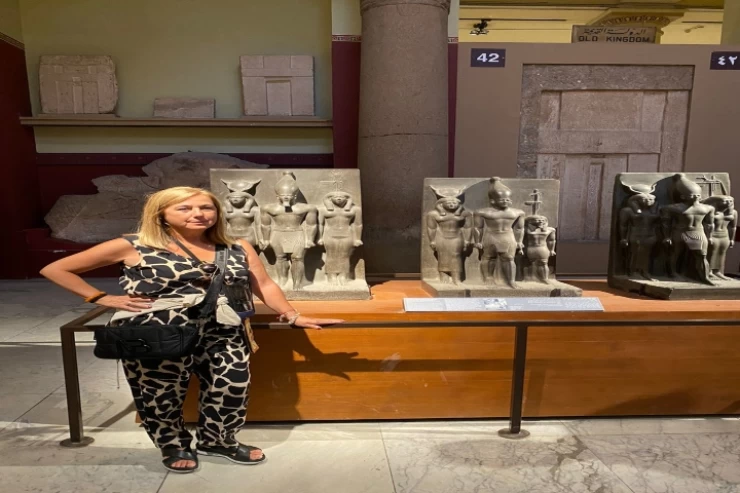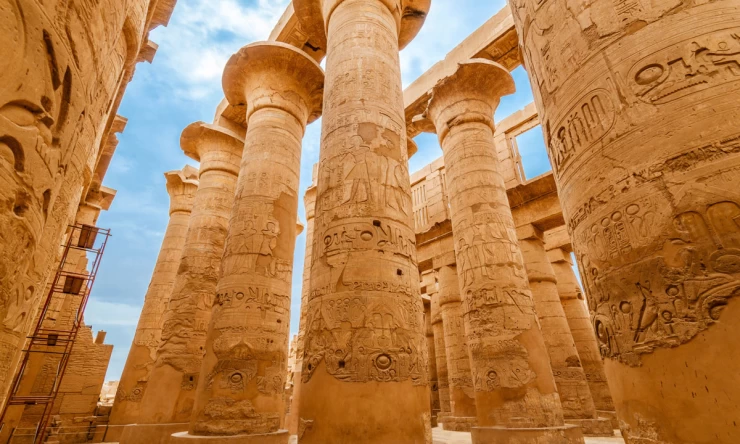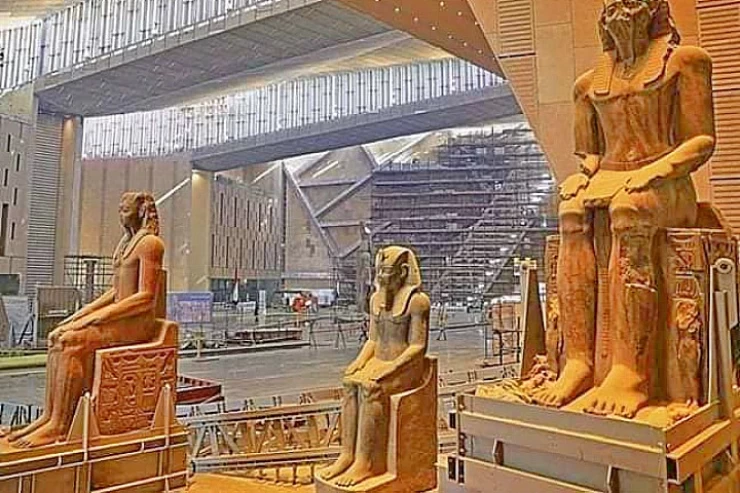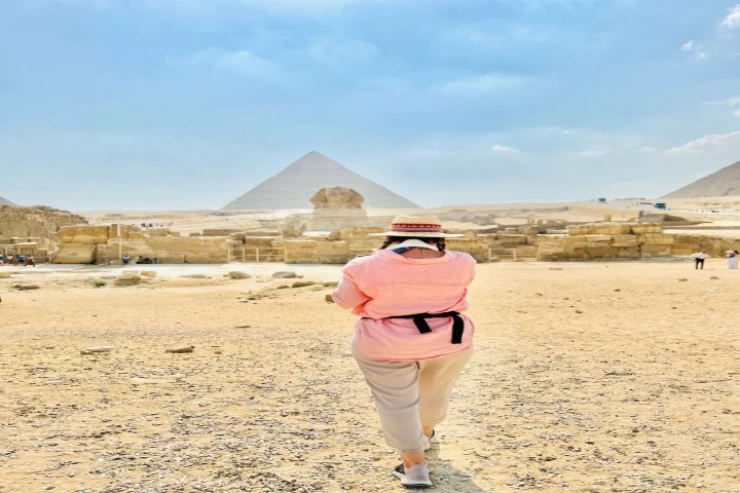
History of Chephren | King Khafra
Khafre or Khaf Ra (Egyptian: Al-Zahir as RA or Al-Zahir as the sun), a king from the Fourth Dynasty. He is the third or fourth king of this family in the ancient state, he ruled between the years 2559 and 2535 bc, he was the one who built the second pyramid in Giza. He is most likely the son of King Khufu by a secondary wife who took over the reign after King djedef-ra who had taken over the reign. The pyramid of Khafre is similar in its grandeur to the pyramid of Cheops. His features we recognize through the Sphinx located next to his pyramid, represented by the image of a lion, which indicates strength, with a human head, which indicates wisdom. A carved image was also found in his temple in the valley of the Kings and a statue of the sitting king is in the Egyptian Museum. Little is known about the period of his reign, and there are no evidences confirming the account of the Greek traveler Herod, who describes Cheops and Khafre as tyrants.
King Khafre resided around (2558-2532 BC.M) the son of King Khufu, his pyramid group is in the Giza plateau next to his father's group, and his pyramid appears higher than the pyramid of Khufu because it is on a higher hillock, although in fact it is lower in height, where it is about 143.5 m. The core of the pyramid consists of blocks of local limestone, and the top of the pyramid still retains its original covering made of stately limestone, which used to cover the entire pyramid, so the Egyptians brought it from the quarries of Tora by boats moored near the pyramid
His family
Khafre was one of the Sons of Cheops and his mother is not yet known for certain, but it is believed that she is either Meret Etz the first or hnutsen.
Khafre had several brothers, the eldest of whom was a child of a second mother, but he died young. Some scholars believe that ka'ab was in fact a son of Sneferu, and thus ka'ab was probably a brother of Khufu.
Khafre married four wives, from one of them, Kha Marr Nabati I, he had a son Menkaure, and also gave birth to his daughter "Kha Marr Nabati II", whose name in Arabic means "the appearance of the beloved of the two ladies".
His reign
There is no agreement about the date of his reign, but it has been argued that he ruled between 2558 BC.M. and 2532 BC.M. He built the second largest pyramid in Giza with a height of 143 m and now 136 M and was built over an area of 215 square meters and has two entrances on the north side in addition to the Sphinx, which is 57 m long and 20 m high, and the temple of the god Ra.
King Chephren, son of Cheops:
He is the second reigning son of King Cheops, who returned to the Giza Necropolis to build the second biggest pyramid. You can view it fully from various angles during the tour of the Giza Pyramids; this gigantic structure is unfortunately overshadowed by the work of his father.
Even if the Pyramid of Khafra is smaller than the Great Pyramid of Khufu, it appears taller, as it was erected at a higher location. Originally, it had a height of 143.5 m (471 ft), and it still preserves some of its original casing stones on the tip of the pyramid, providing a view of how these pyramids would have appeared to the people of antiquity. This kingdom consists of a well-maintained Valley Temple, where amazing diorite statues of Khafra were found.
King Chephren of the fourth dynasty of the Old Kingdom in ancient Egypt ruled after his elder brother Djedefre, who built his pyramid in Abo Rawash apparently around 2570 B.C. He assumed power for more than twenty years (almost 26 years) and was succeeded by his son, the builder of the last pyramid in Giza, Mycerinus.
During the reign of Chephren, sculpture made significant progress, so although many of his statues have already been recycled in antiquity, we still have several images of this powerful and self-confident ruler. However, it is thanks to the face of the sphinx that Chephren is universally known. The Sphinx, with its lion body and man's head, which was supposed to depict the symbols of royalty and the sun, was carved into the living rock to stand guard along the ramp leading to the pyramid of Khafre; he was known to be a firm ruler. He closed down many of the temples in Egypt, following the trend started by his father, King Cheops.
The pyramid of Chephren was destined to be the last of the great pyramids. His son and heir, Mycerinus, was satisfied with a decidedly less imposing construction; his pyramid is about a tenth of that of his grandfather and is only 66 meters high. Without worrying about how to understand the key terms of Egyptian history, we will see an Egyptologist guide, who will meet your expectations.


















